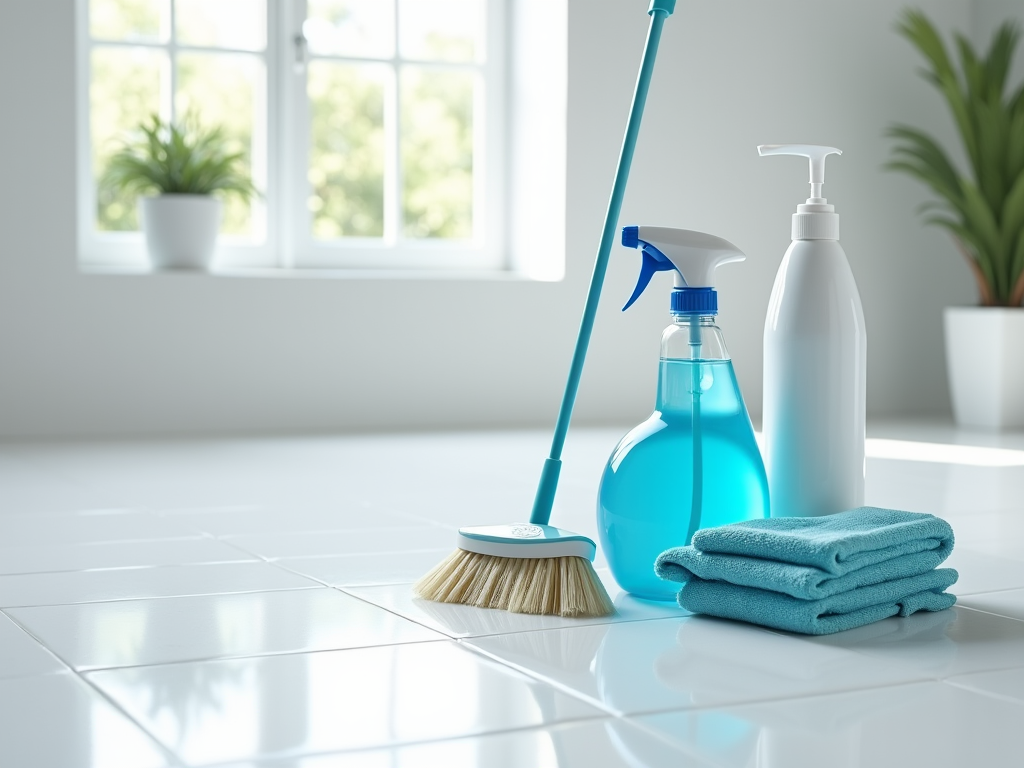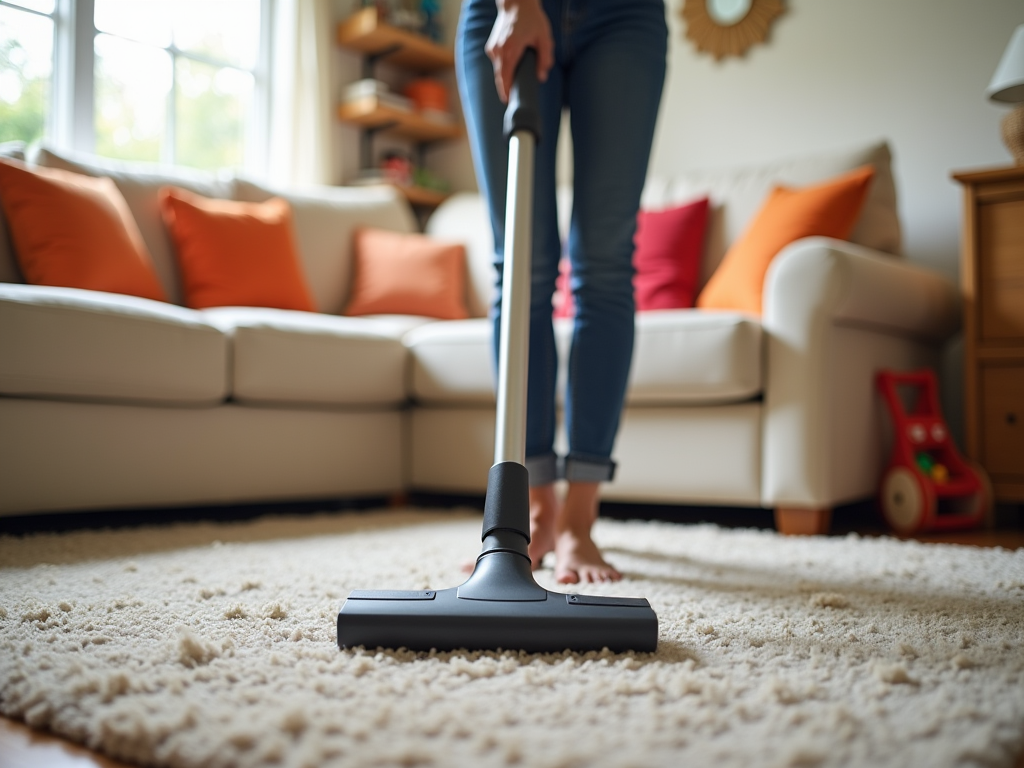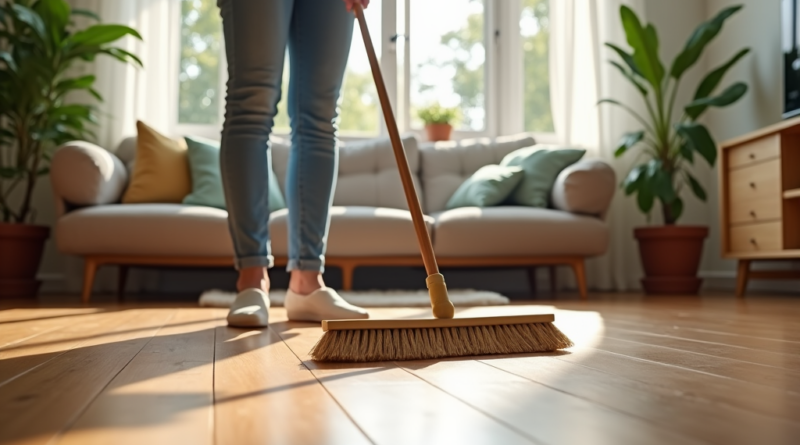The Best Way to Clean Any Type of Floor
When it comes to cleaning floors, the approach may vary based on the type of flooring material, but the goal remains the same: achieving a spotless, hygienic surface that enhances the beauty of your space. Whether you’re dealing with hardwood, tile, carpet, laminate, or vinyl, there’s an effective method for cleaning each. In this guide, we’ll delve into the best cleaning practices tailored for different flooring types to help you maintain their appearance and longevity.
Cleaning Hardwood Floors

Hardwood floors bring warmth and elegance to any home, but they require a delicate touch to maintain their finish. Start by removing dust and debris with a soft-bristle broom or a vacuum with a hardwood floor setting. Avoid using water or steam cleaners, which can damage the wood over time. Instead, opt for a pH-neutral cleaner specifically formulated for hardwood. Use a slightly damp mop for cleaning, and ensure you dry the floor immediately to prevent any water absorption.
Apply hardwood polish occasionally to restore shine and protect the surface. Regular maintenance also includes checking for scratches and applying touch-ups as needed. These simple measures can significantly extend the life of your hardwood flooring, keeping it looking pristine and polished.
Maintaining Tile Floors

Tile floors are durable and easy to maintain, making them a popular choice for kitchens and bathrooms. Begin with sweeping or vacuuming the floor to remove dust and dirt particles. Once the loose debris is gone, mop the floor using a mild detergent mixed with warm water. For stubborn stains, a paste made from baking soda and water can be applied with a soft brush.
The grout requires special attention, as it can accumulate dirt and stains over time. Use a brush with stiff bristles and a cleaner designed for grout to scrub the lines. Rinse thoroughly and allow the floor to dry completely. Regular cleaning prevents discoloration and keeps tile floors looking fresh and vibrant.
Carpets offer comfort and warmth but generally demand more effort in maintenance. Vacuuming regularly is crucial to prevent dirt and dust from embedding deep into the fibers. Spot cleaning should be done promptly with a carpet cleaner specifically for this purpose. Always test cleaners in an inconspicuous area first to ensure they do not cause discoloration.
For a thorough clean, schedule professional carpet cleaning every 12 to 18 months. Keep in mind traffic areas might need more frequent attention. Here’s a simple routine to follow for regular carpet maintenance:
- Vacuum high-traffic areas at least twice a week.
- Address spills immediately to prevent staining.
- Rotate furniture periodically to even out wear.
- Have a professional clean your carpets annually.
Cleaning Laminate Floors
Laminate floors combine durability with an affordable price point, but they can be sensitive to moisture. Dust and dirt are best removed with a dry mop or broom. Avoid wet mopping as laminate can warp if exposed to too much water. Use a laminate floor cleaner sparingly, misting it onto the mop rather than directly onto the floor.
Never use abrasive tools or cleaners containing soap, wax, or polish, as these can dull the finish. A microfiber mop is ideal for capturing particles without scratching the surface. Regular cleaning and immediate spill attention will maintain the luster and condition of laminate floors.
Caring for Vinyl Floors
Vinyl is resilient and water-resistant, which makes it easy to clean. Start with a broom or a damp mop to tackle loose dirt. For a deeper clean, mix a mild, pH-neutral detergent with warm water and mop the floor. Avoid harsh chemicals and abrasive scrubbing pads to prevent damage.
Prevent wear and tear by placing rugs or mats in high-foot-traffic areas. Refrain from dragging furniture across vinyl surfaces to avoid scratches. Regular upkeep with gentle cleaning products will keep your vinyl floors looking as good as new.
Conclusion
Caring for your floors properly not only enhances the aesthetic of your home but also extends the life of the flooring and protects your investment. Each type of flooring has its own unique cleaning requirements, yet they all share the common thread of needing attention and care to remain in their best condition. By following the above tips catered to each floor material, you can ensure a clean, beautiful floor throughout your home.
Frequently Asked Questions
1. How often should I clean my floors?
Regular maintenance is key. High-traffic areas should be swept or vacuumed daily and mopped weekly. Deep cleaning schedules can vary depending on the floor type, but generally, they should be done quarterly.
2. Can I use the same cleaner for all types of floors?
No, using a floor-specific cleaner is best. Hardwood and laminate floors require special formulations, while tile and vinyl can generally tolerate mild, pH-balanced cleaners.
3. Are steam mops safe for all flooring materials?
Steam mops are not recommended for hardwood or laminate floors due to the risk of warping and damage from moisture. They’re generally safe for tile and some sealed vinyl floors, but always check the manufacturer’s recommendations first.
4. How do I remove tough stains from carpet?
Act quickly with a carpet stain remover or a vinegar and water solution. Blot the stain with a clean cloth before it sets, and avoid rubbing as this can push the stain deeper into the fibers.
5. What should I avoid when cleaning floors?
Avoid using harsh chemicals, abrasive scrubbing tools, and excessive water. Each of these can damage floors over time, impacting both appearance and structural integrity.
